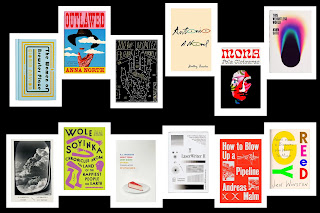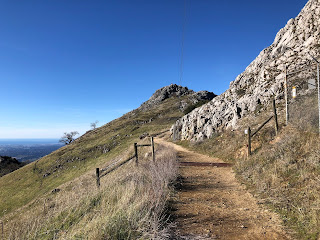2. Isabel Wilkerson, The Warmth of Other Suns: The Epic Story of America's Great Migration (2010) (1/31/22) (BB#1)
A friend of mine a number of years ago asked if I had read this book. He recommended it so highly that I, of course, bought it—but then balked at its length: 545 pages, not including the backmatter. But this year I've decided to read Big Books, so herewith, #1.*This is an epic story, as the subtitle puts it, and beautifully told, weaving together many, many voices from over the course of the twentieth century, beginning around World War I and bringing us into the early 2000s. As Wilkerson explains it,
The book is essentially three projects in one. The first was a collection of oral histories from around the country. The second was the distillation of those oral histories into a narrative of three protagonists, each of whom led a sufficiently full life to merit a book in his or her own right and was thus researched and reported as such. [Wilkerson is herself a Pulitzer Prize–winning New York Times journalist, hence "researched and reported."] The third was an examination of newspaper accounts and scholarly and literary works of the era and more recent analyses of the Migration to recount the motivations, circumstances, and perceptions of the Migration as it was in progress and to put the subjects' actions into historical context.
The Great Migration embraces the many millions of African Americans who quit the Jim Crow South in search of a better, safe life with more opportunity. The three main stories that Wilkerson tells are those of Ida Mae Brandon Gladney, who left Chickasaw County, Mississippi, for Chicago in 1937 with her husband, George, and their two young children, after a cousin was almost killed by their "boss man" for allegedly stealing turkeys; George Swanson Starling, who left Eustis, Florida, in 1944 with his wife, Inez, for New York City, after he tried to enlist his fellow orange pickers in demanding decent pay; and Robert Pershing Joseph Foster, a medical doctor by training and a U.S. Army vet, who left Monroe, Louisiana, in 1953, alone (his wife, the daughter of a well-to-do university president, remained with their two children at her parents' home in Atlanta for virtually the first fourteen years of their marriage), to drive across the country to Los Angeles or Oakland, California. Each went on to settle permanently, each with considerable start-up difficulty because of the circumstances surrounding the Depression, World War II, or, simply, their race and background, but each, ultimately, succeeding—if not strictly materially, at least in terms of building a network of friends and family and being loved in their community.
Speaking of the main conduit from the Deep South north to Chicago and Detroit, Wilkerson writes:
It would not have occurred to them that they were riding history. They were leaving as a family, not as a movement, on the one thing going north. But as it happened the Illinois Central, along with the Atlantic Coast Line and Seaboard Air Line railroads, running between Florida and New York, and the Southern Pacific, connecting Texas and California, had become the historical means of escape, the Overground Railroad for slavery's grandchildren. It hurtled its passengers along the same route and under the same night sky as the Underground Railroad, the secret network of safe houses leading north that had spirited slaves to freedom the previous century.
Or here is George, who spent his entire career as a porter on the trains that plied the eastern seaboard, observing the passengers in 1947:
It seemed to George that the moment they stepped on the train going north, they became different people, started acting like what they imagined the people of the north to be. Some started talking their version of a northern accent, sitting up straighter, eating their chicken wings with their pinkie out, becoming more like the place they were heading to. "A lot of them pretending to be always northerners," George said, knowing full well the difference.
Heading south, it was a quiet and sober train, filled with the people of the North returning home, in their finest suits and hats, and southern visitors having just seen the big city for themselves.
Heading north, the trains were more festive and anxious, filled with people migrating out with all their worldly goods and the people from the North returning to their adopted cities with all they could manage to take with them that they missed from back home in the South.
George could tell the people form the North. The bags that were empty heading south were now heavy with ham and hog head cheese and turnip roots and sweet potatoes and any little thing they cherished from back home and had a hard time getting in the North or that, if they could get it in the North, just didn't taste the same.
The tension between the Old Country and the Promised Land, as the South and the North and West came to be called; between African American migrants and native-born northerners of any race or immigrants from Europe and beyond; between the older and younger generations; between hopes and lived reality—and much more—is explored in rich detail.
It's a remarkable book. I learned so much.
*One lesson I learned, though: I'm going to have to pace myself. Five days ago, I wasn't even halfway through. So the last few days, I've been planted in my chair, reading. It made for a fascinating journey, but I think on the next one I'll try to read a minimum of 30 pages a day—and hopefully more. Or maybe I'll just get sucked in and keep going . . .
























